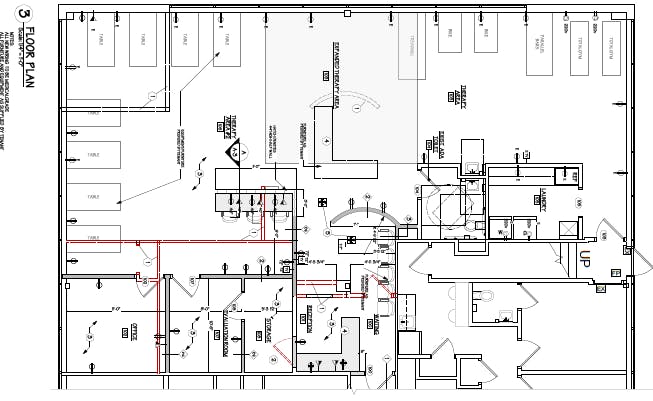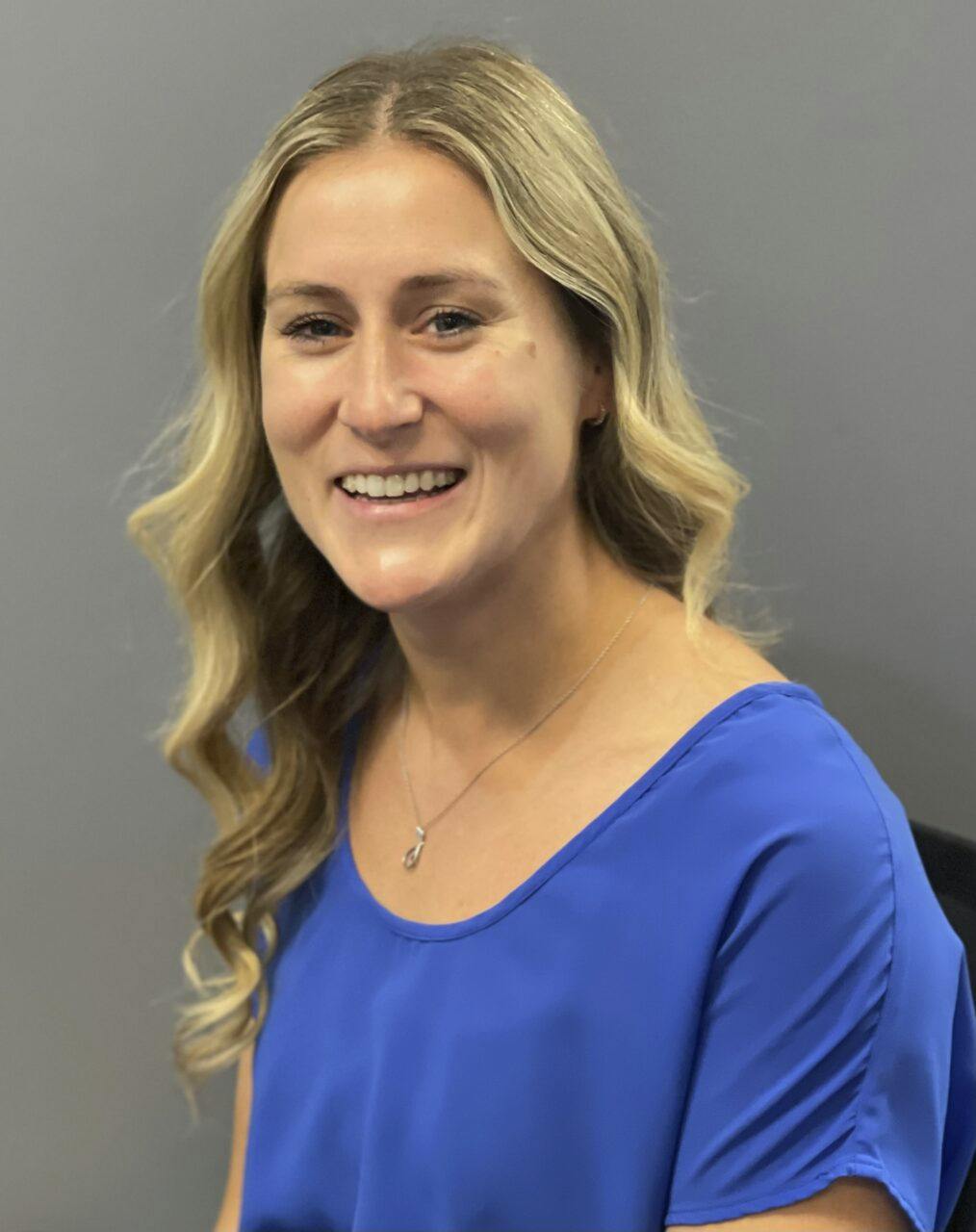New study published in the Oct. 2024 Journal of Orthopedic and Sports Physical Therapy breaks down the concussion rates by sport, sex, and practice/game. The data reveals the following:
Highest incidence rate: rugby, snowboarding, ice hockey and football.
Higher incidence in softball/baseball, basketball and soccer in females compared to males.
Higher incidence during games compared to practice for football, soccer, ice hockey and rugby.
db OrthoPT is the recognized leader of baseline concussion testing and post injury concussion rehabilitation in Monmouth County. Call us today to schedule your child’s baseline concussion test or your child has not recovered following a head injury.
Our Manalapan office is Expanding!!
You will start to see construction in the coming weeks to expand out Manalapan office an additional 500+sqft to adding the space of an adjacent office into our layout. Most of the work will be done in the evenings or on the weekend to avoid any disruption to patient care. We are excited for the additional space to better serve our patients. It will allow for a private evaluation room and more open treatment area. Dr. Moczerniuk, Dr. Filzen, Dr. Baez and the rest of the Manalapan staff are excited for the new space!
Please be patient during the construction process.
Dr. Alyssa Baez, PT, DPT joins our Manalapan office team!
We are pleased to announce that Dr. Alyssa Baez, PT, DPT will be joining the team in our Manalapan office on September 5th. Dr. Baez grew up here in Manalapan and went on to obtain her Bachelor of Science in Health Sciences from the University of Hartford and her Doctorate in Physical Therapy from Rutgers, The State University of New Jersey.
Dr. Baez did her final year clinical affiliation at db OrthoPT and decided to join our practice upon graduation and passing her state licensing exam. She is an active member of the American Physical Therapy Association and will bring an elevated level of energy as she joins db OrthoPT as our newest associate. Please join us in welcoming her many years of success and prosperity.
Appointments can be scheduled with Dr. Baez beginning in early September by calling our Manalapan office – 732-462-2162. She can also be reached via email at abaez@dborthopt.com.
First-Ever Exercise Guidelines for RA Treatment Emphasize Physical Therapy Several APTA members helped create the new guidance on how best to integrate exercise, diet, and other elements into RA management.
Date: Wednesday, July 5, 2023
In this review: American College of Rheumatology Guideline for Exercise, Rehabilitation, Diet, and Additional Integrative Interventions for Rheumatoid Arthritis (Arthritis & Rheumatology)
The Message
In its first-ever set of guidelines for the use of interventions beyond antirheumatic drugs in the treatment of rheumatoid arthritis, the American College of Rheumatology strongly recommends consistent engagement in exercise and emphasizes the role of physical therapists and occupational therapists in what it believes should be a multidisciplinary treatment team.
Authors say that while more research is needed to identify which types of exercise and rehabilitation approaches are most effective, that only underscores the importance of knowledgeable therapists working with patients to identify the kinds of exercises and treatments that are best suited to the patient’s own needs and goals. Additional recommendations offer guidance related to diet, cognitive behavioral therapy, acupuncture, thermal modalities, and more.
The Study
Development of the guideline began with the establishment of a set of clinical population, intervention, comparator, and outcome questions, which were the basis for a systematic review of the research literature. That team gathered relevant research, evaluated the quality of evidence, and presented an initial report that was reviewed by additional guideline team members as well as a panel of 12 patients with RA. The patient panel added its perspectives and preferences to the review, which was presented to a voting panel. That panel had to reach agreement of 70% or more of panel members in order to arrive at a recommendation as well as establish a level of evidence to support the recommendation. Three members of the patient panel served on the voting panel.
The initial review identified nearly 9,000 potentially eligible manuscripts, which were winnowed to 275 that met criteria for use in guideline development.
APTA members Anita Bemis-Dougherty, PT, DPT, MAS; Thomas Bye, PT, DPT, MS; Chris Lane PT, DPT; Hiral Master, PT, MPT, PhD, MPH; Carol Oatis, PT, PhD; Daniel Pinto, PT, PhD; Kimberly Steinbarger, PT, MSPT, DHSc, MHS; Louise Thoma, PT, PhD; and Daniel White, PT, ScD, MSc, participated in the development of the guideline. Oatis, Thoma, and White were among the authors of an accompanying editorial.
Recommendations and Evidence Strength
The recommendations are presented in four broad areas: exercise, rehabilitation, diet, and “additional integrative intervention recommendations.” Recommendations are identified as either “strong” or “conditional” and include guidance both for and against various interventions. Only engagement in exercise was supported by moderate evidence strength, the single highest strength rating given in this resource. The remaining recommendations were supported by low- to very low-certainty evidence, or were not supported by evidence but were identified by the voting panel as important to include in the guideline.
Findings
The full guideline, the accompanying editorial, and appendices are available for free. Here’s a rundown of the recommendations with passages from the report.
Exercise Recommendations
Consistent Engagement in Exercise Over no Exercise
Evidence Certainty: Moderate
Recommendation Strength: Strong
“The exercise type, frequency, intensity, and duration were not formally defined because the evidence … did not support such precision … and there is considerable variation in patient values, preference, and access to different types of exercise. The specific elements of an exercise intervention should be tailored to each person.”
The panel also developed conditional recommendations in favor of aerobic, aquatic, resistance, and mind-body exercise (for example, Tai Chi or yoga) over no exercise, with the aerobic, resistance, and mind-body recommendations supported by low- to very low-certainty evidence. The aquatic exercise recommendation was supported by low-certainty evidence.
Rehabilitation Recommendations
Participation in Comprehensive Physical Therapy and/or Occupational Therapy
Evidence Certainty: Very low
Recommendation Strength: Conditional
“This recommendation applies throughout the RA disease course. Clinicians should discuss the opportunity to refer the patient to [occupational therapy] and/or [physical therapy] early in the RA disease course, with the recognition that [these] interventions can be tailored to unique patient needs.”
Additional Rehabilitation-Related Recommendations
The guideline includes several more-specific types of rehab and related equipment use. These recommendations include:
Hand therapy over no hand therapy for patients with hand involvement (conditional; low certainty).
Splinting, orthoses, and/or compression over non-use of these approaches for patients with hand/wrist involvement and/or deformity (conditional; very low certainty).
Bracing, orthoses, and/or taping over non-use of these approaches for patients with foot/ankle involvement (conditional; very low certainty).
Bracing and/orthoses over no bracing/orthoses for patients with knee involvement (conditional, no evidence).
Joint protection techniques over no joint protection techniques (conditional; low certainty).
Activity pacing, energy conservation, activity modification, and/or fatigue management over their absence (conditional; no evidence but found to be “generally safe and may help preserve physical function”).
Use of assistive devices, adaptive equipment, and environmental adaptations over non-use (conditional; no evidence).
Vocational rehab and work site evaluations and modifications (conditional; no evidence).
Diet Recommendations
Based on low- to moderate-certainty evidence, the panel conditionally recommends a Mediterranean-style diet but acknowledges that “patient preferences, and costs of, access to, and burden associated with this diet” may make it hard to maintain. Other recommendations in the diet category:
A conditional recommendation against “adherence to a formally defined diet other than Mediterranean-style,” based on very low to moderate certainty of evidence.
A conditional recommendation in favor of following established dietary recommendations without use of dietary supplements, based on very low- to moderate-certainty evidence.
The panel didn’t issue recommendation on weight but voiced “unanimous support of clinicians engaging in discussion about maintaining healthy body weight.”
Additional Recommendations
In addition to the exercise, rehab, and diet recommendations, the guidance also includes recommendations for and against other interventions. These include:
For the use of standardized self-management programs (conditional; low certainty).
For cognitive behavioral therapy and/or mind-body approaches (conditional; very low to low certainty).
For acupuncture (conditional; low certainty).
For massage therapy (conditional; very low certainty).
For thermal modalities (conditional; very low certainty).
Against the use of electrotherapy (conditional; low certainty).
Against use of chiropractic therapy (conditional; no evidence).
‘An Important Step in Actualizing the Role of Physical Therapy’
In an editorial that accompanied the publication of the guidelines, panel member authors characterize the guideline as “a critical step toward meaningful progress in integrating physical therapy into routine care for RA.”
Editorial authors acknowledge that when it comes to the physical therapy-related recommendations, all but the general exercise recommendations were framed as conditional, but they point to the range of intervention approaches included in the review as the primary cause. Viewed in that context, they argue, the additional recommendations underscore the need for an informed, patient-centered approach.
“To integrate this new guideline into physical therapy practice, it is essential to appreciate the implications of the conditional recommendations,” they write. “In this care, the choice to use or not use a treatment is preference-sensitive, meaning current evidence suggests no superior option and the choice depends on what matters most to the patient. The final decision should be made jointly between the patient and the provider.”
While the editorial describes the guideline as an “important step in actualizing physical therapy,” authors also map out several barriers to full implementation. These include gaps in knowledge about the importance of exercise among rheumatology providers, low levels of awareness of the role of physical therapy among persons with RA, varying levels of expertise with RA among physical therapists, barriers in current payment policies, and a lack of sufficient research. Each of these barriers, once recognized, can be addressed so that the recommendations can be employed “to advance the role of physical therapy toward meeting the health needs of adults with RA,” they write.
Reference: American Physical Therapy Association 2023 (https://www.apta.org/article/2023/07/05/ra-exercise-guidelines)
db OrthoPT has 3 new Board Certified Orthopedic Clinical Specialists!
Congratulations to Dr. David Colella, PT, DPT, OCS, Dr. Marisa Priolo, PT, DPT, OCS and Dr. Kelly Haspel-Gutkes, PT, DPT, OCS for successfully passing the certification exam to become Board Certified Orthopedic Clinical Specialists through the American Board of Physical Therapy Specialties. This advanced certification in Orthopedic rehabilitation now places them in a special group of physical therapists here in NJ. Along with Dr. David Bertone, PT, DPT, OCS, Dr. Jerry Moczerniuk, PT, DPT, OCS and Dr. Jessica Filzen, PT, DPT, OCS, we now have the most Board Certified Orthopedic Clinical Specialists of any practice in NJ!
Ice or Heat? Which one is best and why?
No matter what the injury is, our first instinct is to attempt to ease the pain. Using heat or ice to the injured area can be useful to reduce pain, but how do we decide which to use? Heat and ice work differently to treat injuries, and the effects they have on our bodies can provide clues as to which is most appropriate to treat YOUR pain.
ICE reduces pain, inflammation, and edema/swelling by constricting our blood vessels and reducing blood flow. Additionally, ice reduces muscle spasm and metabolic demand. Ice is therefore best for acute injuries (less than 4 weeks) such as bumps and bruises, muscle strains, ligament sprains, overuse injuries, or acute joint pain. To safely apply ice use a towel or other barrier between your skin and the ice for protection as ice can actually burn your skin. There are no set rules for how long to apply ice, but 10-15 minutes is long enough.
HEAT increases blood flow, metabolism, and elasticity of connective tissues such as muscles and joints. Heat is best used for chronic pain, muscle soreness, tight joints or muscles, and once acute swelling has gone. One thing you want to avoid is using heat within the first few days of injury, because applying heat can worsen the inflammation and your pain. Safely applying heat is like applying ice: utilize a protective barrier between the heat source and your skin for 10-15 minutes. Avoid falling asleep with heating sources to avoid burns or other skin irritation.
Want to learn more about this topic? Visit these websites below:
https://www.researchgate.net/publication/269767537_Mechanisms_and_efficacy_of_heat_and_cold_therapies_for_musculoskeletal_injury
https://www.hss.edu/article_ice-or-heat.asp
Osteoporosis: What you need to know.
Osteoporosis is a common disease that causes a thinning and weakening of the bones. It can affect people of any age. Women have the greatest risk of developing the disease, although it also occurs in men. Osteoporosis affects 55% of Americans aged 50 or older; one-half of women and a quarter of men will fracture a bone as a result of low bone density (osteopenia) or osteoporosis. Thin bones are the cause of 1.5 million fractures per year in the United States; hip fractures alone result in 300,000 hospitalizations. It is important to diagnosis low bone density or osteoporosis early so that steps can be taken to rebuild bone strength and lessen the risk of fracture.
Physical therapists are movement experts. They improve quality of life through hands-on care, patient education, and prescribed movement.
Want to learn more about the medical management of Osteoporosis with the latest medications used? Medical-Journeys-in-Osteoporosis-Patient-Handout-2
Patch.com article about db OrthoPT move to Red Bank location
Physical Therapists Help Active People Live Better
Physical therapy has lots of benefits for active people. Athletes, performers, weekend warriors, and people who work in physically demanding jobs can all benefit from the expertise of a physical therapist. Here are 3 ways physical therapists help active people stay that way.
Injury Treatment
Active people get hurt. Physical therapists have the knowledge and skills to help people recover from injuries faster. In addition to helping people recover, physical therapists will look for the root cause of the injury and address that as well, to help keep the injury from coming back. If the injury is severe and requires surgery, a physical therapist will guide the recovery and make sure the person gets back to their activity. But in some cases, a physical therapist can help an injured person avoid surgery in the first place.
Injury Prevention
Surgery isn’t the only thing physical therapists can help people avoid. A physical therapist can also help with injury prevention too. A thorough assessment of an athlete’s strength, mobility, balance, and coordination helps to identify issues that could lead to injury. A PT can then design a program to improve the problem areas before they lead to injury. A PT can also assess an existing training plan and help to identify areas that may lead to sprains, strains, or overtraining.
Improve Performance
In addition to helping people improve areas where they’re weak, therapists can help people get better in areas of strength. A physical therapist can create a program to improve strength, flexibility, coordination, agility or speed. Physical therapists are movement experts. They can break down the requirements of a specific physical task like lifting or throwing, then design a training program that will help people meet those demands.
Physical Therapy is more than just a way to get back on your feet after an injury – it can also help you stay at the top of your game. Whether you’re an athlete, a dancer, or someone who wants to stay in shape, physical therapy can help you reach your performance goals. With the right exercises and treatments, physical therapists can help you improve strength, flexibility, and endurance so that you can perform at your best and lower your risk of injury.
References:
1) Research (peer-reviewed)
a) What we currently do for sports – https://pubmed.ncbi.nlm.nih.gov/31077961/
b) Sports injury prevention – https://pubmed.ncbi.nlm.nih.gov/35421834/
c) https://pubmed.ncbi.nlm.nih.gov/34238639/
2) Articles and Content
a) https://www.idsportsmed.com/7-benefits-of-sports-physical-therapy/
b) https://www.childrens.com/amp/health-wellness/how-physical-therapy-helps-athletes-and-what-to-expect
How Can Physical Therapy Help to Avoid Surgery? – Tucson Orthopaedic Institute
Consider physical therapy first for faster recovery and reduced healthcare costs.
Recently published in Two River Times on 3/13/23
Musculoskeletal conditions (MSK) affect 50% of the American population age 18 and over and account for nearly $420 billion in annual costs to our healthcare system according to a retrospective study published in the Journal of the American Medical Association (JAMA) in 2020. The cost in healthcare dollars is greater than diabetes, cardiovascular disease, and behavioral health. Physical therapy is considered one of the essential treatment options to help reduce these costs as well as speed up recovery by allowing ease of access into the healthcare system.
The most common musculoskeletal conditions being referenced are spinal injuries such as neck and back pain, tendon and ligament injuries like ankle sprains or shoulder bursitis as well as degenerative conditions which include osteoarthritis and spinal stenosis. The treatment for all these conditions involving bones, joints, ligaments and tendons account for a significant strain on healthcare services through the use of medical imaging such as MRI and X-rays as well as expensive specialist evaluations like orthopedic surgeons or pain management physicians.
Back pain has been identified in several studies as a main driver in spending dollars in the US. This is because many Americans spend most of their time at work either sitting or doing repetitive lifting. The wear and tear associated with musculoskeletal injuries to the neck and back account for 42% of all spending for MSK care. Physical therapy has been identified as a cost saver in the healthcare system because of early treatment, education and prevention strategies utilized by doctoral trained physical therapists.
The public is often confused about who to see first for these types of disorders and that is a major factor not only in resolving the pain syndrome but the costs associated with making the improper decision. For example, you wake up with a stiff neck and inability to turn your head or you twisted your ankle playing basketball in the local men’s league. Your recovery, as well as the cost associated with your care, will be determined by that early decision. You might decide to go to an emergency room or urgent care center for imaging and pharmaceutical options or you may wait several weeks to see a specialist and get referred for an expensive MRI. All of this may be unnecessary and delays your recovery.
A much more efficient system is to access the skills of a physical therapist through direct access. This changed in NJ back in 2003 when it was no longer required to get a prescription or referral from a physician to see a physical therapist. A skilled physical therapist will be able to screen for serious injury and make the necessary referral to a specialist if deemed necessary after performing a thorough initial evaluation. In the meantime, active treatment can be initiated immediately to reduce pain, swelling or limited mobility. This approach has been determined to reduce healthcare costs by 60% for low back pain as determined by Childs and Fritz in their landmark 2015 study published in BMC Health Services Research.
How should you choose your physical therapist? Make sure they are doctoral trained (DPT), have a board certification in orthopedics or neurology, practice in a private practice setting not controlled by a large business corporation and have 5 star patient reviews.
Dr. Bertone is a Doctor of Physical Therapy and Board certified Orthopedic Clinical Specialist by the American Board of Physical Therapy Specialties with over 35 years of clinical experience. He is the owner of db OrthoPT with locations in Red Bank and Manalapan. Dr. Bertone can be reached at www.dborthopt.com.
Moving through Fibromyalgia with Physical Therapy
Nearly 5 million people in the United States have fibromyalgia. This chronic condition causes widespread pain, fatigue, and cognitive issues. It can be difficult to manage and can severely impact quality of life. The best treatment plans combine exercise, modalities and education. Physical therapists are experts in all three, so they’re the perfect practitioner to help!
Exercise
Currently, recommendations for the management of fibromyalgia include patient education and non-pharmacological interventions. The right exercise routine can help with pain, fatigue, sleep disturbances, depression, and more. A combination of strengthening, stretching and aerobic exercise is the most effective. You and your PT will work together to find the right type and intensity of exercise to best manage your symptoms.
Modalities
Exercise isn’t the only tool the PT has to help people with fibromyalgia though. Gentle manual therapy and massage have been shown to help reduce pain and muscle stiffness caused by fibromyalgia. Physical therapists also use modalities to reduce symptoms.
Examples include:
● electrical stimulation
● laser
● biofeedback
● dry needling in states where it is allowed
In addition to land-based exercise, some clinics also have the option of aquatic therapy. This combines the benefits of exercise with the warmth of a therapeutic pool.
Education
Education is another important component in treating fibromyalgia. A physical therapist spends more time with their patients than most other practitioners. They have the time to help you understand what’s going on, and what you can do about it. Research shows that people with more knowledge about their condition have better outcomes, more confidence, and cope better.
While there is no cure for fibromyalgia, physical therapists can help with pain management, strength, mobility, fatigue and function to help patients find relief from their symptoms.
References:
1. Research (peer-reviewed)
a. Therex effectiveness – https://www.ncbi.nlm.nih.gov/pmc/articles/PMC5632473/
b. PT for fibromyalgia – https://pubmed.ncbi.nlm.nih.gov/31140398/
c. Exercises for fibro – https://pubmed.ncbi.nlm.nih.gov/29185675/
d. Manual therapy for fibro – https://pubmed.ncbi.nlm.nih.gov/32604939/
e. Aquatic PT for fibro – https://pubmed.ncbi.nlm.nih.gov/23818412/
f. Effectiveness of exercise with fatigue, etc for fibro – https://pubmed.ncbi.nlm.nih.gov/32721388/
2. Articles and Content
a. https://pubmed.ncbi.nlm.nih.gov/11028838/
b. https://pubmed.ncbi.nlm.nih.gov/36051912/
c. https://www.choosept.com/guide/physical-therapy-guide-fibromyalgia









